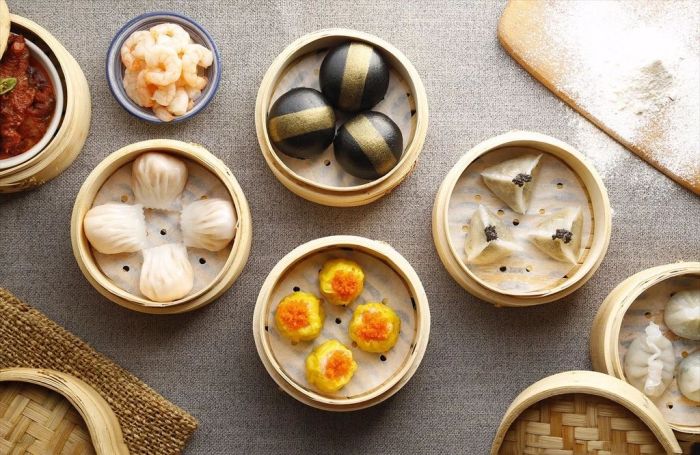How to cook purple cabbage chinese style – In the realm of culinary delights, there exists a vegetable that not only captivates the eyes with its vibrant hue but also tantalizes the taste buds with its unique flavor profile. This vegetable is none other than the purple cabbage, a versatile ingredient that adds a pop of color and nutrient-rich goodness to any dish it graces.
As we delve into the art of Korean cuisine, our expert shares valuable insights on how to cook a bi meal Korean style. From the intricate flavors to the precise techniques, this guide offers a step-by-step approach to creating a delicious bi meal that will surely impress your taste buds.
Exploring the Wonders of Purple Cabbage Chinese Style: How To Cook Purple Cabbage Chinese Style

When it comes to cooking purple cabbage Chinese style, one must first understand the essence of Chinese cuisine – a harmonious blend of flavors, textures, and colors that create a symphony of taste. Purple cabbage, with its slightly sweet and peppery taste, is a perfect addition to this culinary orchestra.
Tips for Cooking Purple Cabbage Chinese Style
1. Start by thinly slicing the purple cabbage to ensure even cooking and a pleasing texture.
2. Consider stir-frying the cabbage with aromatics such as garlic, ginger, and scallions to enhance its flavor profile.
3. Balance the sweetness of the cabbage with savory ingredients like soy sauce, oyster sauce, or hoisin sauce.
4. Add a touch of heat with a sprinkle of red pepper flakes or a dash of chili oil for a spicy kick.
5. Garnish your dish with toasted sesame seeds or chopped peanuts for a crunchy contrast.
What Do You Mean by Cooking Purple Cabbage Chinese Style?, How to cook purple cabbage chinese style
Cooking purple cabbage Chinese style involves using traditional Chinese cooking techniques and flavor combinations to create a dish that is both visually stunning and delicious. By incorporating ingredients commonly found in Chinese cuisine, such as soy sauce, ginger, and garlic, you can elevate the humble purple cabbage into a culinary masterpiece.
What is Known About Purple Cabbage Chinese Style?

Purple cabbage Chinese style is a popular dish in Chinese households and restaurants alike. Its vibrant color and unique flavor make it a standout addition to any meal. Whether served as a side dish or as part of a larger stir-fry, purple cabbage adds a touch of elegance and sophistication to the dining table.
Solution to Cooking Purple Cabbage Chinese Style
To master the art of cooking purple cabbage Chinese style, one must embrace the principles of Chinese cooking – balance, harmony, and attention to detail. By following traditional recipes and experimenting with different flavor combinations, you can unlock the full potential of this versatile vegetable and create dishes that are both delicious and visually stunning.
Detail Information on Cooking Purple Cabbage Chinese Style

When preparing purple cabbage Chinese style, it is important to pay attention to the cooking time and temperature to ensure that the cabbage retains its vibrant color and crisp texture. Overcooking can result in a mushy and unappetizing dish, so be sure to cook the cabbage just until it is tender-crisp.
Are you ready to impress your friends and family with a delicious Korean-style meal? Learn how to cook a bi meal Korean style like a pro with our step-by-step guide. From preparing the ingredients to mastering the art of seasoning, this recipe will surely elevate your cooking skills to a whole new level.
Additionally, the choice of seasonings and sauces can greatly impact the final flavor of the dish. Experiment with different combinations of soy sauce, vinegar, hoisin sauce, and chili paste to create a dish that suits your taste preferences.
Describing Purple Cabbage Chinese Style in Depth
Picture a sizzling wok filled with colorful vegetables, the aroma of garlic and ginger wafting through the air, and the sound of oil popping as the cabbage hits the pan. This is the essence of cooking purple cabbage Chinese style – a sensory experience that delights the senses and nourishes the body.
As the cabbage cooks, it releases its natural sugars, caramelizing and developing a rich, complex flavor. The addition of soy sauce and other seasonings enhances this flavor profile, creating a dish that is both savory and slightly sweet.
Conclusion
In conclusion, cooking purple cabbage Chinese style is a delightful journey into the world of Chinese cuisine. By following traditional techniques and experimenting with different flavors, you can create dishes that are both visually stunning and delicious. So go ahead, grab a head of purple cabbage and embark on a culinary adventure that will tantalize your taste buds and impress your guests.
FAQs
1. Can I substitute green cabbage for purple cabbage in Chinese-style cooking?
While green cabbage can be used as a substitute for purple cabbage, keep in mind that the flavor and color of the dish may be slightly different. Purple cabbage adds a unique sweetness and vibrant hue that green cabbage cannot replicate.
2. How long should I cook purple cabbage Chinese style?
Cook the cabbage just until it is tender-crisp to retain its vibrant color and crunchy texture. Overcooking can result in a mushy and unappetizing dish.
3. What are some other ways to cook purple cabbage Chinese style?
Aside from stir-frying, you can also braise, steam, or pickle purple cabbage Chinese style. Each cooking method brings out different flavors and textures in the cabbage.
4. Can I make purple cabbage Chinese style ahead of time?
Yes, you can prepare purple cabbage Chinese style ahead of time and reheat it before serving. Just be sure not to overcook the cabbage initially, as it may become soggy upon reheating.
5. Are there any health benefits to eating purple cabbage Chinese style?
Purple cabbage is rich in antioxidants, vitamins, and minerals that support overall health and well-being. By incorporating this nutrient-rich vegetable into your diet, you can enjoy its many health benefits while savoring its delicious flavor.
